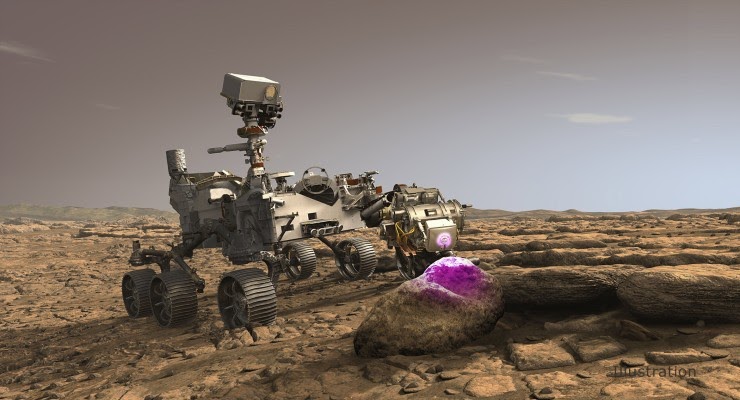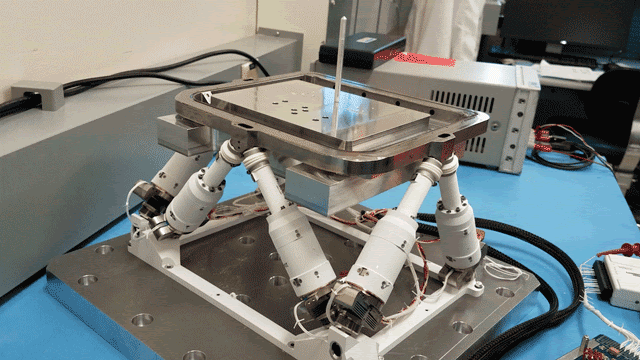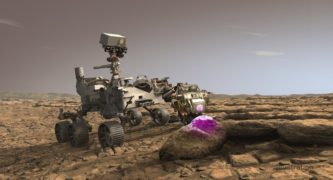
With a little luck and some help from artificial intelligence, scientists at NASA’s Jet Propulsion Laboratory who built the SUV-size Perseverance Mars rover, which is now speeding toward the Red Planet, are hoping a specialized X-ray scanner carried by the rover may detect signs of ancient fossils in Martian rocks, according to JPL.
Among the vast array of sensors and scientific instruments packed onboard the rover is a lunchbox-size device known as the Planetary Instrument for X-ray Lithochemistry, or PIXL, which is mounted to the end of Perseverance’s seven-foot-long robotic arm, JPL said in a written statement.
The idea of using X-rays to seek out signs of ancient alien life on Mars is not a new one, and previous missions have included X-ray fluorescence spectrometers in some form, according to the statement.
But PIXL is far more precise than its predecessors, explained Abigail Allwood, PIXL principal investigator at JPL.
“PIXL’s X-ray beam is so narrow that it can pinpoint features as small as a grain of salt. That allows us to very accurately tie chemicals we detect to specific textures in a rock,” she said.
The instrument will help choose which samples of rock and soil the rover will package and store for a planned future mission to collect them.
The technique of X-ray fluorescence, also used to help art experts analyze paint to identify art forgeries, can reveal a great deal about a material, according to JPL.
“Allwood used it to determine that stromatolite rocks found in her native country of Australia are some of the oldest microbial fossils on Earth, dating back 3.5 billion years,” the JPL statement said. “Mapping out the chemistry in rock textures with PIXL will offer scientists clues to interpret whether a sample could be a fossilized microbe.”

In order to precisely aim the high-tech scanner, engineers designed and built a six-legged “hexapod” for the scanner to sit atop of. It used artificial intelligence technology to precisely move the narrow X-ray beam in the 100-micron increment — about twice the width of a human hair — over the course of eight hours to gather the most detailed data possible.
“The hexapod figures out on its own how to point and extend its legs even closer to a rock target,” Allwood said. “It’s kind of like a little robot who has made itself at home on the end of the rover’s arm.”
The PIXL instrument is nocturnal.
Since the temperature on Mars can vary by more than 100 degrees over the course of a Martian day, or sol, the metal making up the rover’s robotic arm can expand and contract by as much as half an inch, JPL officials said. To minimize the effects of the metal’s expansion and contraction, PIXL will conduct its work after sunset.
“PIXL is a night owl,” Allwood said. “The temperature is more stable at night, and that also lets us work at a time when there’s less activity on the rover.”
Perseverance is scheduled to touch down on Mars on Feb. 18.
More information on the Mars 2020 mission is available online at nasa.gov/perseverance.














 0 comments
0 comments


